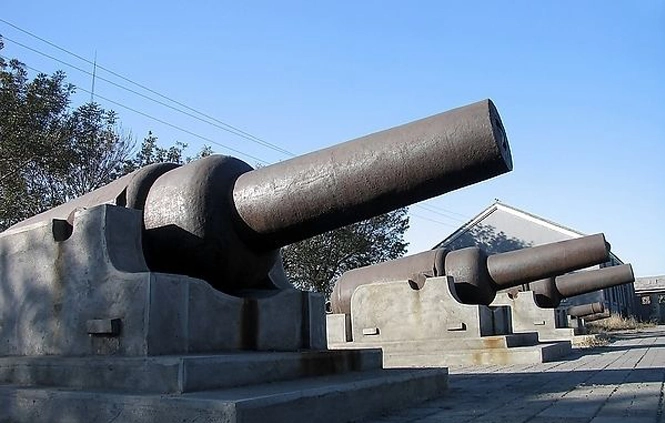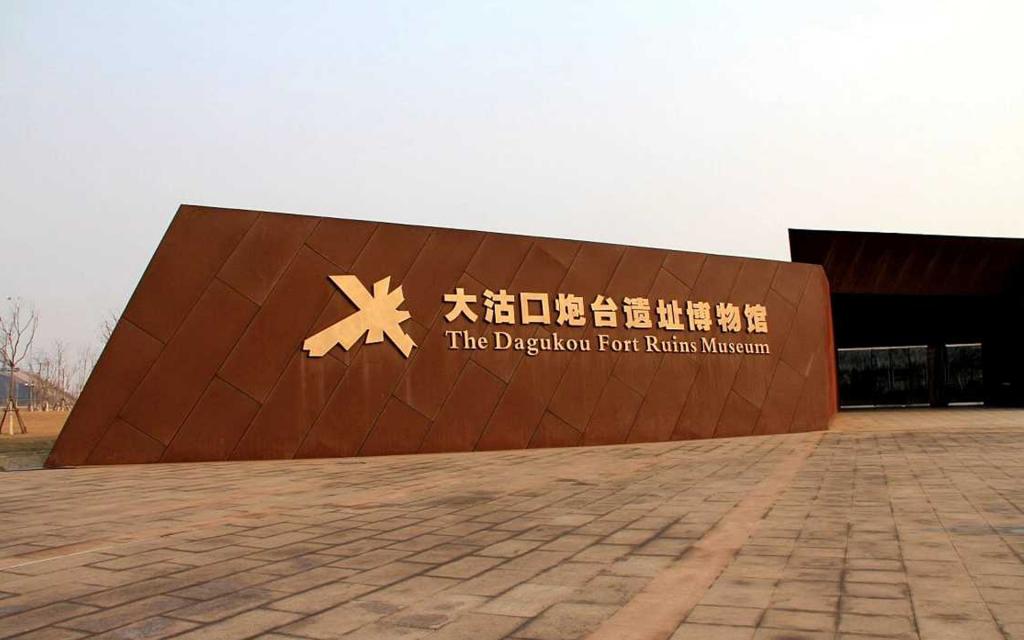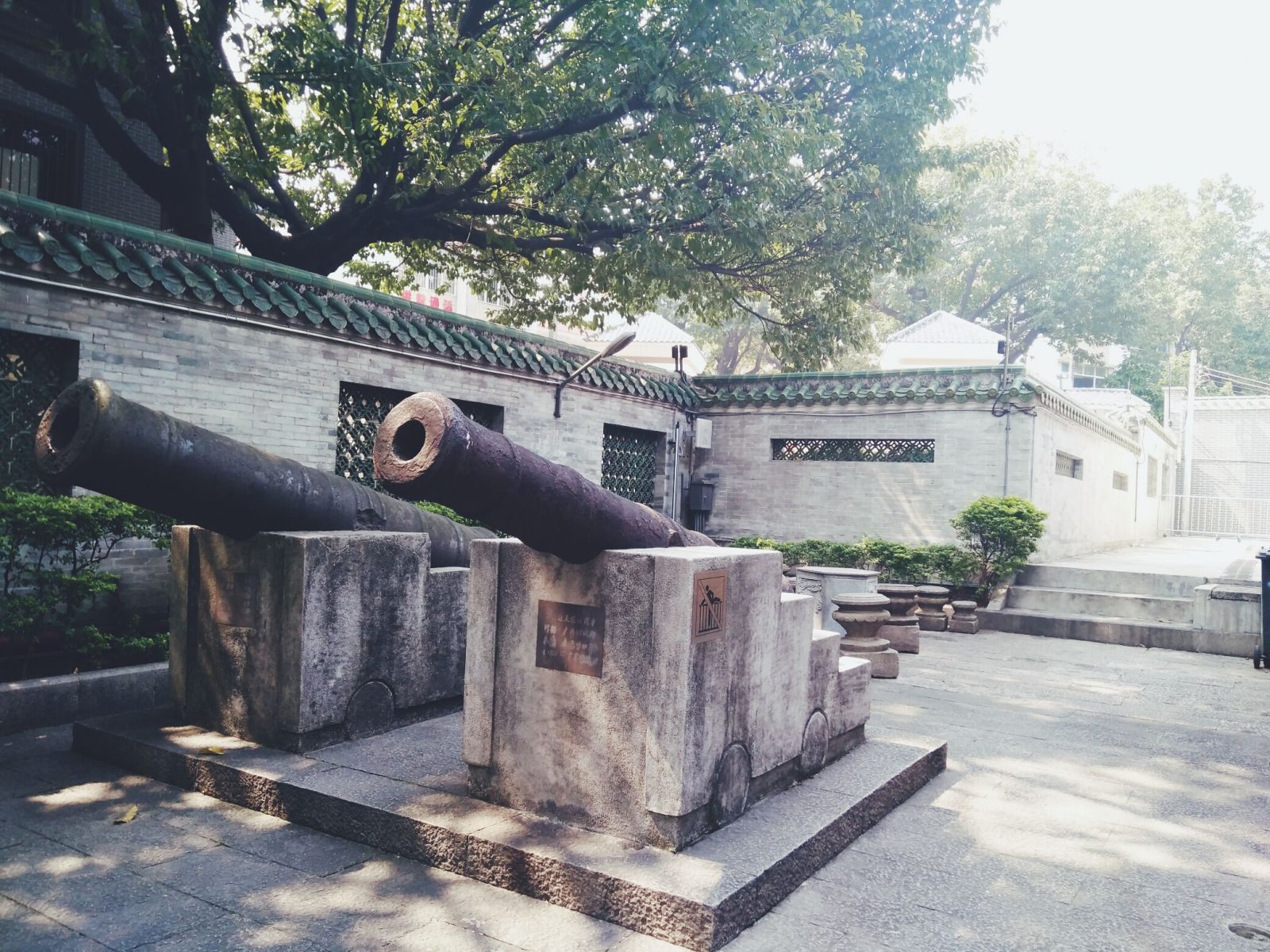Chinese Name: 大沽炮台 Pronunciation: Dàgū Pàotái
Building Time: 1816
Suggested Visiting Hours: 1-2 Hours
Address: No. 1, East Paotai Road, Binhai New Area, Tianjin, China
Occupied Area: 93.8 hectares (including the museum and the ruins)
Building Function: It was originally built for military defense
| Tourist | Price |
| Adults | 25 yuan |
| Seniors aged 60 to 69 with ID cards or senior citizenship certificates | 10 yuan |
| College students with student ID cards (excluding graduate students) | 10 yuan |
1. Free for minors and seniors older than 70 (valid certificates required).
2. It is free to visit on the International Museum Day (May 18th) and the National Cultural and Natural Heritage Day of China (the second Saturday in June).
| Tuesday to Sunday | 9:00 - 16:30 |

Dagu Fort, also known as Dagukou Fort, is located at the estuary of the Hai River in the southeast of Tianjin. It used to be a vital fortress in northern China and was called the “Shield for Tianjin”.
In the Ming Dynasty (1368 - 1644), the capital was relocated to Beijing, which was quite close to Tianjin, while Dagukou was the main maritime gateway to the capital. Therefore, the emperor at that time ordered to build fortresses and set up the defense at Dagukou. Since then, Dagukou had become a critical place to fight against invaders.
Now it has become one of the ruins of coastal defense in the modern history of China.

In 1817, the 22nd year of the reign of Emperor Jiaqing of the Qing Dynasty (1644 - 1912), two forts were respectively built on the south and north sides of the Hai River.
In 1841, the 21st year of the reign of Emperor Daoguang of the Qing Dynasty, another three forts were put up: two on the south side and one on the north side. With altogether the five forts and other earthworks, a complete military defensive system took shape.
During the Second Opium War (1856 - 1860), the forts played an important role despite the defeat of the Qing government.
In 1900, the 26th year of the reign of Emperor Guangxu of the Qing Dynasty, the forts were taken by the Eight-Power Allied Forces, who arrived in Beijing then and captured the city.
Later, most of the forts had to be dismantled as requested in the Protocol of 1901, and only three forts on the south side and some earthworks on the north remained. Since 1997, one of the forts has been open to the public.

Dagu Fort has occupied a vital part in the modern history of China. In 1988, it was listed as an important heritage site under state protection. Later, the Dagukou Fort Ruins Museum was built on the site and opened its door in 2011.
With an area of 3,900 square meters, the museum consists of permanent and temporary exhibition halls as well as a 3D cinema, in which visitors may have a close look at the development of the coastal defense of China during the Qing Dynasty.
Visitors are kindly advised to make a reservation or book tickets in advance on the official website.
Take Tourism Special Line 1 and get off at the last stop (the Dagukou Fort Ruins Museum).
Chinese: 请带我去大沽炮台。English: Please take me to Dagu Fort.
If you go to Dagu Fort from the center of Tianjin (Renaissance Tianjin Lakeview Hotel), it takes about 80 minutes (about 190 yuan).
If you go to Dagu Fort from Tianjin Binhai International Airport, it takes about 65 minutes (about 185 yuan).
If you go to Dagu Fort from Tianjin Railway Station, it takes about 70 minutes (about 190 yuan).
If you go to Dagu Fort from Tianjin West Railway Station, it takes about 80 minutes (about 200 yuan).
If you go to Dagu Fort from Tianjin South Railway Station, it takes about 80 minutes (about 230 yuan).
